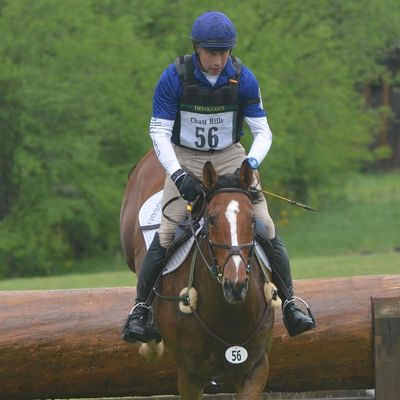Signed in as:
filler@godaddy.com
Signed in as:
filler@godaddy.com

We keep a few stalls for short and long term training horses. Contact us for current availability.
Our approach to training is based on comprehension and dialogue. Horses are incredibly generous and honest creatures, which means they're receptive to training and being on a team from the outset.
Effective communication is critical to good training. A shared language is a necessity, and understanding how a horse thinks and their motivations are very useful keys to development. Like people, horses are unique individuals, with different experiences and attitudes that affect how they react and interpret situations. They also have good days and bad days, so being flexible and adaptable is important.
Through decades of working with scores of horses personally, and many more via instruction, from newborn foals and young, receptive horses to those that are confused, disengaged, or uncooperative, several basic principles have become obvious.


Our horses learn many of the same lessons I teach to other riders, whether it's initial starting or a horse already underway. One early lesson I refer to it as "the A, B, C lesson". Essentially, it's teaching the horse what "aids" are and how they should respond to them. It's simply the formation of a language. The analogy starts with the alphabet, which then allows you to construct and use words, then sentences, and eventually paragraphs full of nuance. It's always surprising how horses manage to muddle through without a coherent system of communication, or understanding what the objective is. In those cases, the results can be transformative when the missing pieces fall into place.
Once we've got a basic system of communication, we continue to build on it by adding more vocabulary, and soon we're able to help the horses understand how they should use themselves. Horses learn the basics of flatwork - moving correctly and optimally. It seems no horse ever naturally moves correctly, often as a result of hidden injuries from early years or learning compensatory habits. Adding a rider, especially when communication is limited and force or intimidation are used, can severely compromise efficient and correct movement. This is no different for horses doing dressage, any form of jumping, or racing - there is always room for improvement that will increase performance and extend a career.
The importance of moving properly cannot be overstated. We're constantly assessing the horse's physical strength and the ability to use their body in certain ways, also their mental speed, and what tone or approach is most effective in helping the horse comprehend. The goal at this stage is for the horse to enjoy working properly at a high, but appropriate level of output.
Most horses need a period of consistent work to establish an optimal way of going, a good work ethic, and confidence in themselves and the partnership.
Everything has a 'forward' focus, engaging the horse physically which in turn helps develop mental focus. Along the way, we're getting more nuance in the aids and learning to compound things, such as let's go forward and side-ways at the same time while maintaining a balanced frame. It's also important to vary exercises constantly, so the horse is not simply learning to repeat patterns.
My mantra is 'wins beget wins', so I'm always setting the horse up to succeed. Momentarily lowering the bar is perfectly acceptable, and far better than proving it was too high. Being fair and realistic helps to cement trust in the rider that everything is always reasonable and achievable, including every time more is asked of the horse.
There are always glitches with training, but if the system is methodical, flexible, and closely monitored, more often than not, they can be foreseen and remedied quickly. If something unexpected pops up, it is addressed immediately and isn't allowed to fester. Sometimes it requires going back to fill in a missed gap or breaking down the process into several, smaller steps. These glitches will often give valuable insights and provide priceless training opportunities if they are used wisely - learning from mistakes on multiple levels.
When appropriate and the horse is ready, we begin popping over obstacles using the language we have developed and the same direct and simple approach. Even a horse that isn't going to have a jumping career benefits from learning the basics of jumping.
It's easy to get stuck in routine habits and overlook the benefits of exposure to different situations. We use several different arenas and riding areas on the farm, then venture out to other venues to desensitize and develop confidence in new situations. Eventually they start performing or competing at an appropriate level and only move up in class or level when they are ready. With sport-horses, this isn't because they have done a prescribed number of competitions or have won a particular show, but when there is more to be gained and very little being risked by the horse seeing or doing more. To progress but not overreach, we push the horses to improve, but remain within a realistic and fair developmental zone.
It may seem surprising to those engrossed in competition, but without a doubt, the most rewarding moments with horses are unrelated to competitive success. Instead, they are the breakthroughs in training when something clicks after hours or months of work, or when a horse adds a part of themselves to the performance through expression or focused effort. These moments are intangible, fleeting, and usually unnoticed by others, but they are far more rewarding than prizes and accolades. At a time when horses are increasingly used as tools to feed egos and hide insecurity, it's important to recognize what should be more important.
